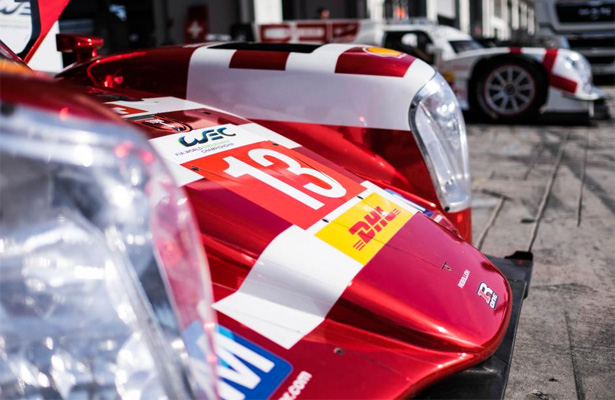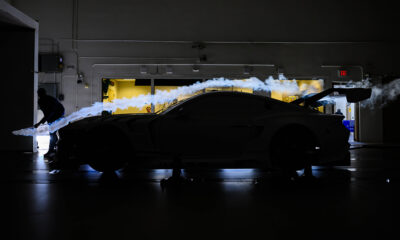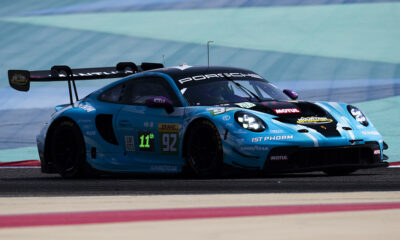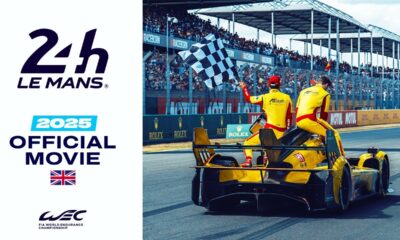
Photo: Jeff Carter/FIA WEC
With low grid numbers, cars that are unable to fight for overall podium finishes and a new set of regulations on the horizon, the future of the lightweight prototypes, or commonly known as LMP1 Privateer, remains unclear, as the FIA World Endurance Championship closes out its 2015 season later this month in Bahrain.
The subclass, reserved for non-hybrid LMP1 cars, has flown under the radar since its launch last year, with only two teams, Rebellion Racing and ByKolles Racing, having embraced the platform, which has slipped further away from the factory hybrids in recent months.
“If you’re looking at a strategy or a place to be racing and you’re struggling to compete in your own class because the competition has just so many more resources to call upon, then you start to think if it’s the right place to be and should we be looking at other options?” Rebellion Racing team manager Bart Hayden told Sportscar365.
“Our Plan A is to be in the WEC with the P1 car and that’s what we’re focusing on. But if the gap continues to grow and the privateer field is even more distant, I think it will be difficult to attract people into that.”
The Hayden-led Rebellion squad are among several teams contemplating what’s next for the P1 Privateers, which were some six seconds per lap off the pace from the factory P1 machinery last weekend in Shanghai.
Rebellion has stated that it could depart for IMSA P2 competition in 2017, although the ByKolles outfit remains committed for the long-term, with the Austrian squad evaluating an expansion to a two-car operation with its AER-powered CLM P1/01 prototype next year.
“For me, the class has potential because there’s many good young drivers,” ByKolles Director of Operations Boris Bermes told Sportscar365. “We have Simon [Trummer] here, and Lucas Auer, who did a very good job last year. There’s these GP2/World Series/Formula 3 drivers and they don’t want to drive in LMP2 with the gentlemen drivers.
“For them, they want a car that’s better than a P2 car and they want to run with professionals to show to manufacturers and sponsors they are in a top structure.”
With LMP2 moving to a largely spec class in 2017, with four approved chassis constructors and a single engine supplier in the WEC, Bermes feels the P1 non-hybrid class could see a notable increase in entries.
“There are people that don’t want to run with a one-make car,” he said. “People want to have their own cars. We have one enthusiastic person for that. Rebellion has an enthusiastic person who wants to have this. [OAK Racing team owner Jacques] Nicolet always likes to have his own car. And Strakka, too.
“These people want to be a constructor and not buying cars and to have the freedom and not have limitations for everything [like in LMP2].”
However, one of those prospective entries has been in a holding pattern, as Strakka Racing is waiting for further clarification in the rules and class outlook before moving forward with its previously announced P1 non-hybrid program for 2017.
“The landscape has changed slightly since then within LMP1-L and it raises some concerns for us,” team principal Dan Walmsley told Sportscar365.
“All that means at the moment is that we’re evaluating it and working with the relevant parties to make sure we’ve got a viable project for the future.”
Walmsley said that possible reduced grid sizes, the performance difference between P1-L and P2 — which will see a significant increase in speed in 2017 — as well as talk of new chassis regulations for 2018, are all factors they are evaluating.
“The things that make [LMP1-L] attractive is that it’s a clear step ahead of P2, and the costs and technologies involved would be reasonable,” he said.
“I think everyone expects it to be a good step forward from LMP2 in proportion with the performance of the car but equally we shouldn’t be getting into massively expensive engine contracts like the hybrid guys are.
“I think if we can achieve that, it would tick a lot of boxes, not just for Strakka but other teams out there. That would attract people into the category.”
Rebellion’s Hayden, meanwhile, has also raised questions on possible changes to the P1 regulations, originally due in 2017, but now understood to be delayed until 2018 at the earliest, which will call for a new monocoque design.
“We want to keep a bit of a weather eye on what the 2017 regulations are going to be,” he said. “Because there were going to be wholesale change and now it looks like it won’t be and maybe more somewhat piecemeal.
“There’s been a significant investment in the R-One project, in the hardware. If there’s an opportunity to utilize the cars and assets again in 2017, we’d be foolish not to look at it, especially if we get on top of the reliability and we get the bugs out of the cars as we’re expecting we could.”
It’s understood current and prospective LMP1 Privateer teams will meet with the FIA and ACO later this month in Bahrain to discuss the category’s future.
Walmsley, meanwhile, is hopeful of moving forward with Strakka’s 2017 plans but admitted they would need to green-light the project by December or January at the latest in order to avoid risks of the timeframe providing compromises to the project.
“I think there’s a good willing within the P1 Privateers to make sure there’s some interest,” he said. “That level of interest would still stimulate us to move forward.
“We’re having to look at the landscape and make sure there’s a place for us to be racing in. On that basis, we hope to be there.”
The future of the non-hybrid LMP1s, after all, could play a significant part of WEC, should LMP1 manufacturer support dwindle in the years to come.
“The manufacturers are [making] quite an entertaining show,” Bermes said. “Even for the future, the ACO and the organizers should push for [LMP1 Privateer] because if a manufacturer stops, there’s only five or six of these cars, especially with the Volkswagen crisis.
“To me it seems like the Porsche project is quite safe but the Audi project, who knows. And if Toyota does another year like this, people can start to think twice about spending the money.
“Just like Peugeot four years ago, it can change from one day to another. Things can happen quite quickly for manufacturers.”





















